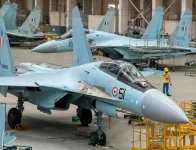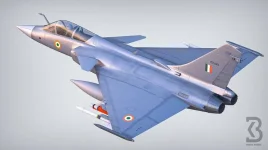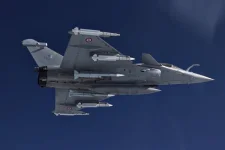- Views: 5K
- Replies: 64
Producing Russia's advanced Su-57E stealth fighter jet at Hindustan Aeronautics Limited's (HAL) Nashik facility could require remarkably little new investment, according to a senior official from Rostec, Russia's state-owned defence and technology corporation.
The official stated that the existing infrastructure used for manufacturing Su-30MKI aircraft means only 20-30% new tooling would be necessary to adapt the plant for the fifth-generation fighter.
This potential efficiency stems largely from the extensive experience and equipment already present at the HAL Nashik plant. For the past two decades, this facility has been central to India's air power, manufacturing nearly 200 Su-30MKI multirole fighters under a licensed production agreement with Russia's Sukhoi Design Bureau (now part of Rostec's United Aircraft Corporation).
This long-term project has equipped the plant with specialised ground machinery, assembly jigs, support equipment, and a workforce skilled in complex fighter jet production.
The Rostec representative explained that while the Su-57E, the export version of Russia's premier stealth fighter, features cutting-edge technologies like advanced avionics, composite materials, and a low-observable airframe design, its fundamental assembly methods and manufacturing workflows are quite similar to those of the Su-30MKI.
Consequently, much of the tooling and infrastructure from the Su-30MKI line is reusable. The estimated 20-30% of new tooling would primarily be for elements specific to the Su-57E, such as its unique airframe shape and sophisticated internal systems.
A major advantage highlighted by the Russian official is the potential for significant cost reductions if India opts for local manufacturing. "If India decides to locally manufacture them (Su-57), then it will cut down procurement costs as the money required for their manufacturing locally will be minimum, thus resulting in lower unit cost," the official noted. Refurbishing the existing Nashik line would be considerably less expensive than building a new facility from scratch.
Further savings could be achieved through bulk negotiation leverage for materials and subsystems, the elimination of import taxes, and reduced transportation costs compared to buying fully assembled aircraft.
Moreover, the experienced HAL Nashik workforce, already proficient from years of assembling the Su-30MKI, would require less training, allowing for a quicker transition to producing the Su-57E.
Although the precise cost per aircraft is not public, analysts suggest local production could lower the unit price by 20-30%, potentially making the advanced fighter a more economically feasible option for the Indian Air Force (IAF).
From an operational standpoint, acquiring the Su-57E could substantially boost the IAF's capabilities. Its stealth characteristics are designed to allow penetration of sophisticated enemy air defence systems.
Additionally, its ability to fly at supersonic speeds for extended periods without using fuel-guzzling afterburners (supercruise) offers a tactical advantage in range and response time.
The aircraft is also designed to carry a diverse array of weapons, including advanced air-to-air and air-to-ground munitions, and potentially hypersonic missiles, making it a potent platform for various mission types in future combat scenarios.
This proposal underscores the long-standing India-Russia defence partnership and its potential role in India's ongoing military modernization efforts.



